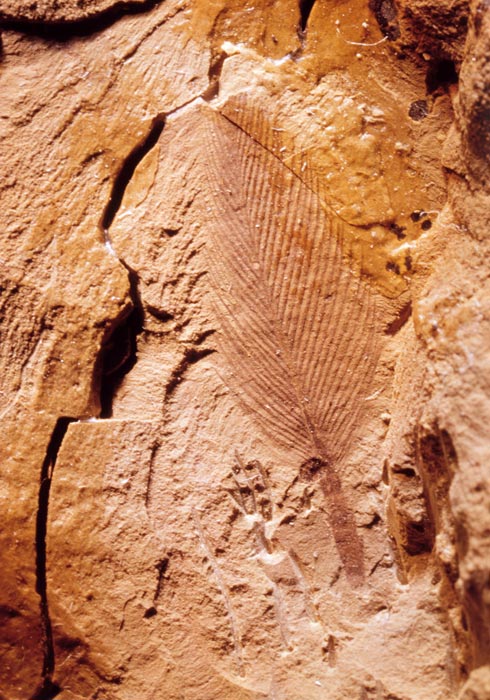 Feather fossil
Feather fossil
TLF ID R6885
This is a colour photograph of a feather fossilised in mudstone. This specimen is from the Koonwarra fossil bed in the South Gippsland region of Victoria. This fossil shows detail of the feather structure, including the central shaft and attached barbs.
